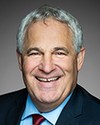In general, the idea of distributed energy resources is to keep energy local—I think you mentioned that—which basically would argue against building the infrastructure between provinces, because you're trying to get the solutions together.
What distributed energy resources are going to be really good at is, as they throw solar in with battery, they'll take the peak out and flatten the load required from the distribution system, creating, from a grid perspective, a smoother profile. That is great when you want to start optimizing the use of distribution and transmission assets. They do that because solar comes on during the day, and when you don't need the solar, you can dump it into the battery. The battery can round out the corners in the morning and at night, and you can kind of level off the demand. At the moment, that, from my analysis, is one of the most cost-effective ways to take advantage of distributed energy. Flattening the demand will actually allow the bulk system, which will always have cheaper electricity—I think so, anyway—to be more efficient.




